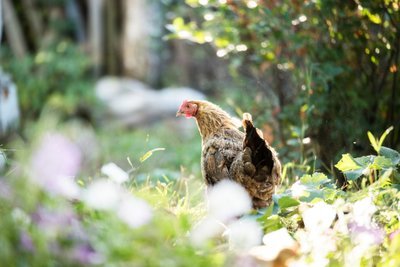Discover the Most Beautiful Orange Tulips Varieties
Orange tulips are a beautiful and vibrant addition to any garden or landscape. There are many different varieties of orange tulips, each with their own unique characteristics and growing requirements. In this article, we'll explore some of the most popular orange tulip varieties and provide useful tips on how to care for them.

Darwin Hybrid Orange Tulips
Darwin Hybrid Orange Tulips are one of the most popular varieties of orange tulips. They have a classic tulip shape and can grow up to 24 inches tall. These tulips bloom in mid-spring and come in a range of shades from bright orange to a deep burnt orange color. They are also great for cut flower arrangements.
To plant Darwin Hybrid Orange Tulips, choose a spot in your garden that receives full sun or partial shade. The soil should be well-draining and rich in nutrients. Plant bulbs in the fall, about 6 inches deep and 4 to 6 inches apart. Water regularly and fertilize with a balanced fertilizer in the spring.
Princess Irene Orange Tulips
Princess Irene Orange Tulips are another popular variety of orange tulips. They have a unique color pattern with a burnt orange base and purple flame-like streaks. These tulips bloom in mid to late spring and grow up to 16 inches tall.
To plant Princess Irene Orange Tulips, choose a spot in your garden that receives full sun or partial shade. The soil should be well-draining and enriched with organic matter. Plant bulbs in the fall, about 6 inches deep and 4 to 6 inches apart. Water regularly and fertilize with a low-nitrogen fertilizer in the fall.
Orange Emperor Tulips
Orange Emperor Tulips are a bold and bright orange variety of tulip. They have a classic tulip shape and can grow up to 18 inches tall. These tulips bloom in mid-spring and are great for cut flower arrangements.
To plant Orange Emperor Tulips, choose a spot in your garden that receives full sun or partial shade. The soil should be well-draining and rich in organic matter. Plant bulbs in the fall, about 6 inches deep and 4 to 6 inches apart. Water regularly and fertilize with a balanced fertilizer in the spring.
Apricot Beauty Tulips
Apricot Beauty Tulips are a unique variety of tulip with a soft apricot-orange color. They have a classic tulip shape and can grow up to 20 inches tall. These tulips bloom in mid-spring and are great for cut flower arrangements.
To plant Apricot Beauty Tulips, choose a spot in your garden that receives full sun or partial shade. The soil should be well-draining and enriched with organic matter. Plant bulbs in the fall, about 6 inches deep and 4 to 6 inches apart. Water regularly and fertilize with a low-nitrogen fertilizer in the fall.
Orange Balcony Tulips
Orange Balcony Tulips are a dwarf variety of tulip that are perfect for planting in containers or small gardens. They have a bright orange color and can grow up to 8 inches tall. These tulips bloom in early to mid-spring.
To plant Orange Balcony Tulips, choose a container with drainage holes and fill it with well-draining potting soil. Plant bulbs about 4 inches deep and 2 inches apart. Water regularly and fertilize with a balanced fertilizer in the spring.
How to take care of your Tulips
Aside from selecting the right variety, it's important to properly care for your tulips to ensure they grow and bloom to their fullest potential. Here are some additional tips for caring for orange tulips:
- Water regularly: Tulips prefer well-draining soil, but they still need regular watering to thrive. Water your tulips deeply once a week, or more frequently during hot, dry weather.
- Fertilize: Fertilize your tulips with a balanced fertilizer in the spring, and again in the fall with a low-nitrogen fertilizer.
- Mulch: Apply a layer of mulch around your tulips to help retain moisture and regulate soil temperature.
- Deadhead: Once your tulips have finished blooming, deadhead the flowers by snipping off the spent blooms. This will help redirect the plant's energy towards bulb growth for next year's blooms.
- Allow foliage to yellow: After your tulips have finished blooming, allow the foliage to yellow and die back naturally. This will help ensure that the bulb receives the necessary nutrients to grow and bloom again next year.
Conclusion
In conclusion, there are many different varieties of orange tulips that can add a pop of color to your garden or landscape. By choosing the right variety and following proper planting and care instructions, you can enjoy a beautiful display of orange tulips in the spring.








